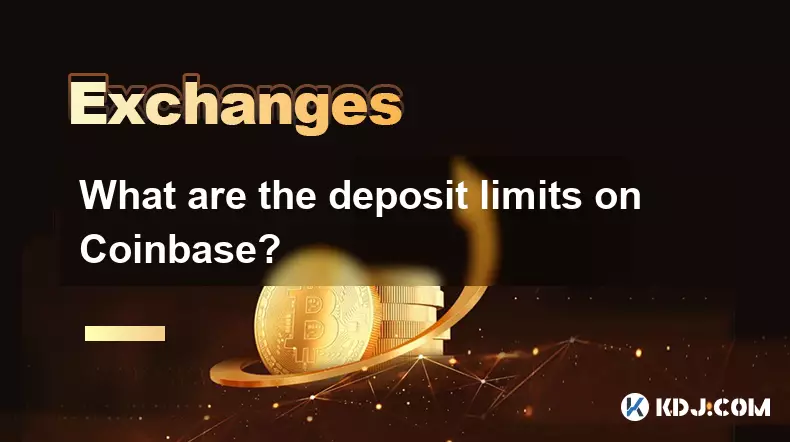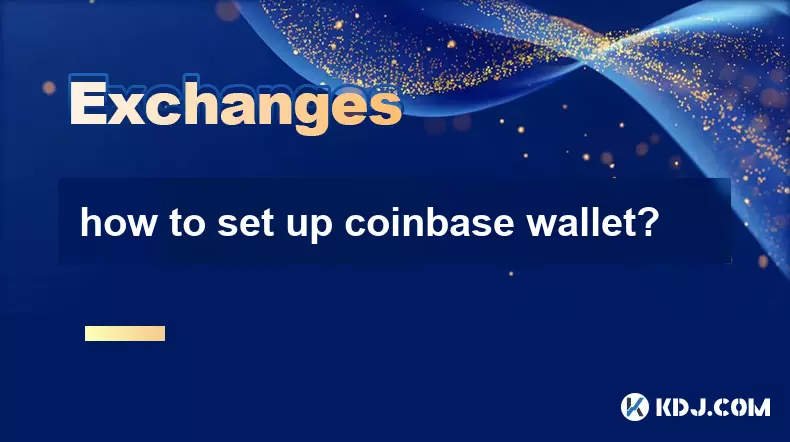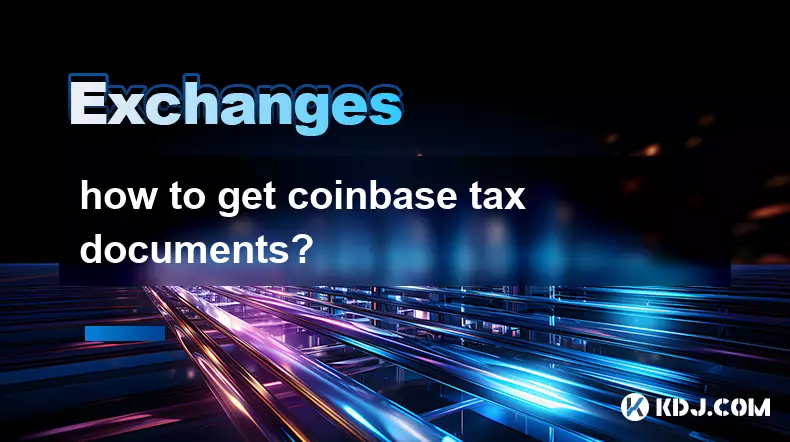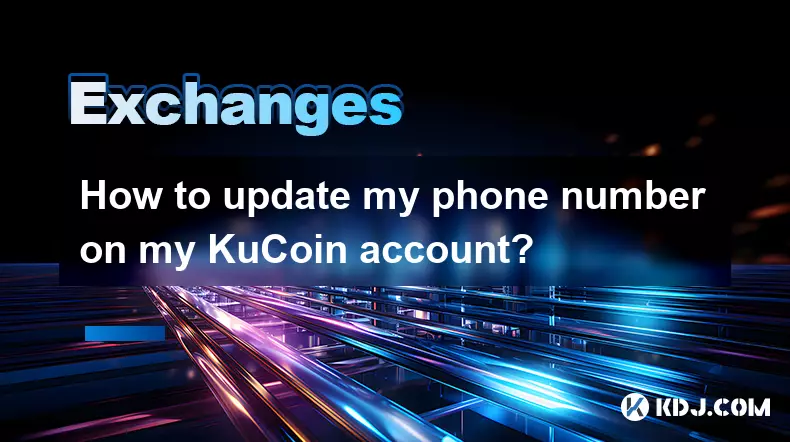-
 bitcoin
bitcoin $108842.957301 USD
-1.88% -
 ethereum
ethereum $3931.777121 USD
-1.66% -
 tether
tether $1.000186 USD
-0.03% -
 bnb
bnb $1153.250882 USD
-2.20% -
 xrp
xrp $2.367904 USD
-1.94% -
 solana
solana $186.182050 USD
-4.20% -
 usd-coin
usd-coin $0.999997 USD
0.00% -
 tron
tron $0.316949 USD
-1.00% -
 dogecoin
dogecoin $0.190780 USD
-3.12% -
 cardano
cardano $0.651324 USD
-2.67% -
 hyperliquid
hyperliquid $37.141055 USD
-0.85% -
 ethena-usde
ethena-usde $0.999224 USD
-0.09% -
 chainlink
chainlink $17.579031 USD
-2.47% -
 bitcoin-cash
bitcoin-cash $509.426284 USD
-2.79% -
 stellar
stellar $0.315298 USD
-2.93%
What are the deposit limits on Coinbase?
Coinbase deposit limits depend on verification level, location, and payment method, with higher limits for verified users and bank transfers.
Oct 10, 2025 at 12:36 am

Understanding Coinbase Deposit Limits
1. Coinbase enforces deposit limits to maintain compliance with financial regulations and ensure user security. These limits vary depending on the user’s region, verification level, and chosen payment method. Users in highly regulated jurisdictions may face stricter caps compared to those in regions with more flexible digital asset policies.
2. Verified users typically enjoy higher deposit allowances. For example, individuals who have completed identity verification through government-issued ID and proof of address can often deposit up to $50,000 per week via bank transfers. Unverified accounts are generally restricted to much lower thresholds, sometimes as little as $500 weekly.
3. The type of funding source directly influences deposit capacity. Bank transfers (ACH) usually come with higher weekly limits than debit card deposits, which are processed instantly but capped at a few thousand dollars per transaction. Wire transfers offer the highest ceilings, sometimes exceeding $100,000 per transaction for institutional or high-net-worth clients.
4. Limits are dynamic and can be adjusted based on account activity and risk assessment. Frequent trading, consistent login behavior, and a history of secure transactions may lead Coinbase to automatically increase a user's deposit allowance over time. Conversely, suspicious activity or prolonged inactivity could result in temporary reductions.
Factors Influencing Individual Limits
1. Geographic location plays a pivotal role in determining deposit restrictions. Residents of the United States, United Kingdom, and select European countries benefit from relatively generous limits due to established regulatory frameworks. In contrast, users in emerging markets may encounter tighter controls as local compliance standards evolve.
2. Verification tier is one of the most significant determinants. Coinbase employs a tiered system—Level 1 allows basic functionality with minimal deposits, while Level 2 and Level 3 unlock progressively higher limits upon submission of additional documentation such as tax IDs or utility bills.
3. Payment method selection impacts both speed and volume. ACH transfers are cost-effective and support larger amounts but take 3–5 business days to settle. Debit card deposits are instant but limited to smaller sums, often under $10,000 monthly. Wire transfers bypass many caps but require direct coordination with banking institutions.
4. Account age and transaction history contribute to personalized limit calculations. Long-standing accounts with regular, compliant usage patterns are more likely to receive elevated limits without manual intervention. New accounts undergo stricter monitoring during initial months.
How to Check and Increase Your Limits
1. Users can view their current deposit limits by navigating to the “Limits” section within the Coinbase dashboard. This page provides a detailed breakdown of daily and weekly caps across all available deposit methods, updated in real time.
2. To request an increase, customers must complete all outstanding verification steps. Uploading clear images of identification documents and confirming contact information often triggers an automatic review process that may elevate limits within 24–72 hours.
3. Engaging in consistent trading activity and maintaining a secure login history strengthens trust signals. Avoiding frequent password resets, enabling two-factor authentication, and using recognized devices improve the likelihood of limit expansions.
4. Contacting Coinbase Support may expedite adjustments for qualified users. While automated systems handle most limit changes, escalated cases involving large deposits or institutional needs can be addressed through direct communication with customer service representatives.
Frequently Asked Questions
Q: Can I exceed my deposit limit by using multiple payment methods?A: No. Coinbase aggregates deposits across all methods toward a single weekly cap based on your verification level. Attempting to bypass limits through multiple sources will trigger system alerts and may lead to temporary holds.
Q: Are deposit limits the same for buying crypto and adding funds?A: Not always. Adding funds refers to transferring money into your Coinbase balance, while buying crypto involves executing trades. These actions share overlapping limits, but purchasing digital assets may incur separate trade-specific restrictions.
Q: Do limits apply to recurring deposits?A: Yes. Recurring purchases are subject to the same weekly and daily caps as one-time deposits. If a scheduled deposit exceeds available headroom, the transaction will fail until sufficient space becomes available.
Q: Is there a minimum deposit amount on Coinbase?A: Yes. Most methods require a minimum of $2 for debit card deposits and $10 for bank transfers. These thresholds help mitigate processing fees and prevent micro-transaction spamming within the platform.
Disclaimer:info@kdj.com
The information provided is not trading advice. kdj.com does not assume any responsibility for any investments made based on the information provided in this article. Cryptocurrencies are highly volatile and it is highly recommended that you invest with caution after thorough research!
If you believe that the content used on this website infringes your copyright, please contact us immediately (info@kdj.com) and we will delete it promptly.
- Solana, Dogecoin, and the Crypto Dip: Bargain Hunting or Dodging Bullets?
- 2025-10-17 10:45:16
- Gold, Bitcoin, and Investment: Navigating the Digital Frontier in Style
- 2025-10-17 10:25:15
- Bengals vs. Steelers: Live Updates, Week 7 - Who Dey or Black & Gold?
- 2025-10-17 10:25:15
- Dogecoin, Thumzup, and DOGE Rewards: Will Real-World Utility Spark a Rebound?
- 2025-10-17 10:45:16
- BullZilla, Cryptos, Buy October: Navigating the Crypto Jungle in Style
- 2025-10-17 10:50:01
- Cardano, TRON, and MAGACOIN: Navigating the Crypto Landscape in 2025
- 2025-10-17 08:45:15
Related knowledge

how to set up coinbase wallet?
Oct 17,2025 at 10:54am
Creating Your Coinbase Wallet Account1. Navigate to the official Coinbase Wallet website or download the mobile application from the App Store or Goog...

how to get coinbase tax documents?
Oct 17,2025 at 05:18am
Tax Documentation Overview on Coinbase1. Coinbase provides tax-related documents to help users report cryptocurrency transactions accurately. These do...

How to buy NFTs on the Binance marketplace?
Oct 17,2025 at 08:36am
Accessing the Binance NFT Marketplace1. Log in to your Binance account through the official website or mobile application. Ensure that two-factor auth...

How to update my phone number on my KuCoin account?
Oct 16,2025 at 05:55pm
Updating Your Phone Number on KuCoinSecuring your cryptocurrency exchange account is a top priority, and keeping your contact information up to date p...

How to use the "fast buy" feature on KuCoin?
Oct 17,2025 at 03:00am
Understanding the Fast Buy Feature on KuCoinThe 'Fast Buy' feature on KuCoin is designed to streamline the purchasing process for users who want to ac...

What is the funding rate in KuCoin futures?
Oct 16,2025 at 06:55pm
Understanding Funding Rates in KuCoin Futures1. Funding rates are periodic payments exchanged between long and short positions in perpetual futures co...

how to set up coinbase wallet?
Oct 17,2025 at 10:54am
Creating Your Coinbase Wallet Account1. Navigate to the official Coinbase Wallet website or download the mobile application from the App Store or Goog...

how to get coinbase tax documents?
Oct 17,2025 at 05:18am
Tax Documentation Overview on Coinbase1. Coinbase provides tax-related documents to help users report cryptocurrency transactions accurately. These do...

How to buy NFTs on the Binance marketplace?
Oct 17,2025 at 08:36am
Accessing the Binance NFT Marketplace1. Log in to your Binance account through the official website or mobile application. Ensure that two-factor auth...

How to update my phone number on my KuCoin account?
Oct 16,2025 at 05:55pm
Updating Your Phone Number on KuCoinSecuring your cryptocurrency exchange account is a top priority, and keeping your contact information up to date p...

How to use the "fast buy" feature on KuCoin?
Oct 17,2025 at 03:00am
Understanding the Fast Buy Feature on KuCoinThe 'Fast Buy' feature on KuCoin is designed to streamline the purchasing process for users who want to ac...

What is the funding rate in KuCoin futures?
Oct 16,2025 at 06:55pm
Understanding Funding Rates in KuCoin Futures1. Funding rates are periodic payments exchanged between long and short positions in perpetual futures co...
See all articles










































































